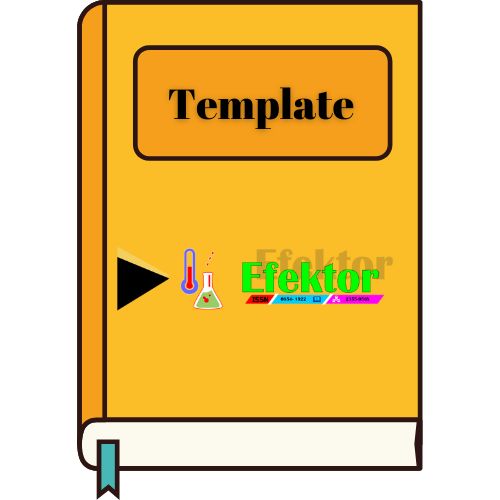Asesmen Potensi Inteligensi Pada Anak Usia Dini
DOI:
https://doi.org/10.29407/e.v8i1.15916Keywords:
Assesment, Intelligence, Early ChildhoodAbstract
The development of learning based on the potential for early childhood intelligence is very limited. The purpose of this study is to describe the potential intelligence of early childhood. The method used is a descriptive qualitative approach. 5 students are the subjects in this study. The instruments used were intelligence tests, observation, and documentation. Data analysis in this study is an interactive analysis model. The results showed that 5 students (2 boys and 3 girls) had IQ abilities from below average to superior categories. Based on this intelligence assessment, it can be a reference for Early Childhood Education (PAUD) institutions to design a curriculum based on child development and in terms of the potential for intelligence to improve the teaching and learning process. The use of child development-based education can improve children's abilities to support future development.
References
Black, S.E., Devereux, P.J., & Salvanes, K.G. (2010). Small family, smart family. Family size and the IQ scores of young men?. J Hum Res. 45, 33-58. https://doi.org/10.3386/w13336
Bogdan, R., & Taylor, S. J. (1993). Kualitatif; Dasar-dasar penelitian. Surabaya: Usaha Nasional.
Budrina, E. G. (2017). Gender Characteristics of Intelligence and Academic Achievement of Younger School Children. Procedia-Social and Behavioral Sciences, 237, 1390-1397. https://doi.org/10.1016/j.sbspro.2017.02.201
Ceci, S.J. (1991). How much does schooling influence general intelligence and its cognitive components. A reassessment of the evidence?. Dev Psychol, 27, 703-22. https://doi.org/10.1037/0012-1649.27.5.703
Conklin, S.M., Gianaros, P.J, Brown, S.M., Yao, J.K., Hariri, A.R., Manuck, S.B., et al. (2007). Long-chain omega-3 fatty acid intake is associated positively with corticolimbic gray matter volume in healthy adults. Neurosci Lett, 421, 209-12.
Davies, G., Tenesa, A., Payton, A., Yang, J., Harris, S.E., Liewald, D., et al. (2011). Genome-wide association studies establish that human intelligence is highly heritable and polygenic. Mol Psychiatry, 16, 996-1005.
Der, G., Batty, G.D., Deary, I.J. (2006). Effect of breast feeding on intelligence in children: Prospective study, sibling pairs analysis, and meta-analysis. BMJ, 333(7575):945.
Dewi, Y. A. S. (2017b). Metode Pembelajaran Guru Etnis Jawa- Madura Dalam Pengembangan Bahasa Siswa RA di Kabupaten Pasuruan. Seling, 3(2), 94–106.
DiLalla, L.F. (2012). Development of intelligence: Current research and theories. J Sch Psychol, 38, 3-7.
Enung, F. (2006). Psikologi perkembangan: perkembangan peserta didik. Bandung: CV Pustaka Setia.
Galton, F. (2012). The history of twins, as a criterion of the relative powers of nature and nurture (1,2) Int J Epidemiol, 41, 905-911.
Giles, B. (2005). Developmental psychology. Rochester: Grange Books.
Gottfredson, L.S. (1997). Mainstream science on intelligence: An editorial with 52 signatories, history, and bibliography. Intelligence, 24, 13-23.
Hasanah, N., & Laily, N. (2020). Self-Efficacy dan Kepuasan Kerja pada Guru Taman Kanak-Kanak (TK). Efektor, 7(1), 80-89. https://doi.org/10.29407/e.v7i1.14398
Lay-Dopyera, M., & Dopyera, J. (1993). Becoming a teacher of young children. New York: McGraw-Hill College.
LPSP3 UI. (2012). Manual dan Norma Intelligenz Struktur Test (IST). Depok: Lembaga Pengembangan Sarana Pengukuran dan Pendidikan Psikologi (LPSP3), Fakultas Psikologi Universitas Indonesia.
Martini, J. (2006). Perkembangan Pengembangan Anak Usia Taman Kanak-Kanak: pedoman bagi orang tua dan guru. Jakarta: PT Grasindo.
Monty, P., & Fidelis. (2003). Mendidikan Kecerdasan, Pedoman Bagi Orang Tua Dan Guru Dalam Mendidik Anak Cerdas. Jakarta: Pustaka Popular Obor.
More, S., Shivkumar, V.B., Gangane, N., & Shende, S. (2013). Effects of iron deficiency on cognitive function in school going adolescent females in rural area of central India. Anemia, 819136.
Nisbett, R.E., Aronson, J., Blair, C., Dickens, W., Flynn, J., Halpern, D.F, et al. (1012). Intelligence: New findings and theoretical developments. Am Psychol, 67, 130-59.
Papalia, D. E., Old s, S. W., & Feldman, R. D. (2009). Human Development Perkembangan Manusia. Jakarta: Salemba Humanika.
Peraturan Menteri Pendidikan dan Kebudayaan Republik Indonesia Nomor 137 Tahun 2014 Tentang Standar Nasional Pendidikan Anak Usia Dini.
Raden, C.P. (1999). Perkembangan Intelegensi Anak. Bandung: Angkasa,
Santrock, J.W. (2007). Perkembangan Anak. Jilid 1 Edisi kesebelas. Jakarta: PT. Erlangga.
Sugiyono. (2009) Metode Penelitian Kuantitatif, Kualitatif dan R&D. Bandung: Alfabeta.
Sukmadinata, N.S. (2011). Metode Penelitian Pendidikan. Bandung: Remaja Rosadakarya.
Warsito, O., Khomsan, A., Hernawati, N., & Anwar, F. (2012). Relationship between nutritional status, psychosocial stimulation, and cognitive development in preschool children in Indonesia. Nutr Res Pract, 6, 451-457.
Weikart, D. (2000). Early childhood education: Need and opportunity. Paris: Unesco.
Zeuny, F. (2021). Mengapa PAUD Penting Bagi Perkembangan Anak?. https://pauddikmasdiy.kemdikbud.go.id/artikel/mengapa-paud-penting-bagi-perkembangan-anak/#:~:text=Tujuan%20utamanya%20adalah%20untuk%20membentuk,mengarungi%20kehidupan%20setelah%20dewasa%20kelak. Diakses pada tanggal 24 April 2021.
Downloads
Published
Issue
Section
License
Authors who publish with this journal agree to the following terms:
- Copyright on any article is retained by the author(s).
- The author grants the journal, the right of first publication with the work simultaneously licensed under a Creative Commons Attribution License that allows others to share the work with an acknowledgment of the work’s authorship and initial publication in this journal.
- Authors are able to enter into separate, additional contractual arrangements for the non-exclusive distribution of the journal’s published version of the work (e.g., post it to an institutional repository or publish it in a book), with an acknowledgment of its initial publication in this journal.
- Authors are permitted and encouraged to post their work online (e.g., in institutional repositories or on their website) prior to and during the submission process, as it can lead to productive exchanges, as well as earlier and greater citation of published work.
- The article and any associated published material is distributed under the Creative Commons Attribution-ShareAlike 4.0 International License













